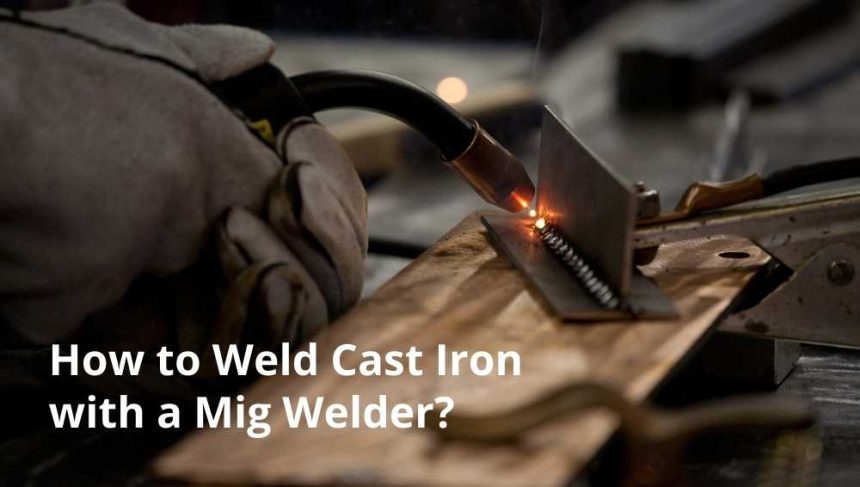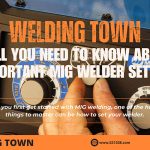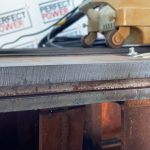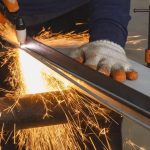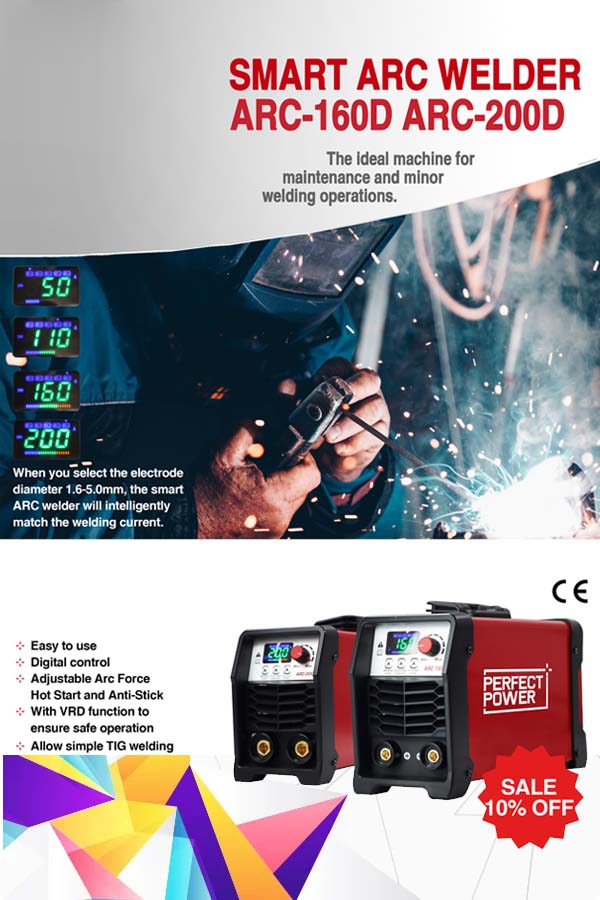Cast iron is one of the best all-around materials for welding. Despite its size, it is easy to work with, doesn’t corrode or rust, and can withstand high temperatures. However, did you realize that welding is just as challenging? Consider looking at this MIG welding cast iron instruction if you’re looking for a solution to this issue. Welding is metalwork that uses heat energy to melt and fuse metals. This article will cover all the information you need to be aware of before buying a MIG welder and teach yourself how to use it before the benefits exceed the drawbacks.
In this article, we will explain how to MIG weld cast iron, exploring the steps, equipment, and tips needed to achieve a strong and durable weld.
021208.com
What is a Mig Welder?
A MIG welder is a welding tool that connects metal by employing a gas-fueled electric arc. Due to the high heat generated and the normally solid welds, cast iron is a frequent material to weld.
What Materials Can You Weld With a Mig Welder?
To weld cast iron using a MIG welder, you must know the many materials used and the restrictions put on each. Because it is sturdy and straightforward to deal with, cast iron is a popular material for welding. However, it isn’t always viable to weld it using a conventional welding technique because of its difficulty. The use of a MIG welder is thus necessary.
For cast iron welding table, the MIG welder is the ideal tool. They employ specialized wire feeds and spools to produce strong, long-lasting welds. Additionally, they are fast and straightforward, allowing you to do your task without delay.
So a MIG welder with a welding jacket is an ideal piece of equipment if you want to weld cast iron. You’ll be set to go if you keep an eye out for machine-compatible materials.
How Long Does It Take for a Mig Welder to Heat Up?
Your MIG welder’s brand and model and how often you weld will affect the answer to this inquiry. Your MIG welder typically takes 5 to 10 minutes to reach working temperature.
What are the Advantages of Using a Mig Welder to Weld Cast Iron?
A few advantages to using a MIG welder when joining cast iron exist. Because of the heat output’s relative strength, you can easily manage large discount welds. Cast iron can be welded with the MIG welder because it can cling to difficult surfaces. Lastly, you may weld in distant regions without worrying about destroying anything since this kind of welder doesn’t need a flux core.
How to Get Started Welding
Cast iron may be strengthened and made more durable by welding supplies. Here are five pointers for beginning cast iron welding:
- Select the appropriate welding rod for the task. Use a MIG welder and stainless steel MIG Welding Wire to weld cast iron. It is simple to weld with this wire since it heats up rapidly and resists corrosion.
- Before beginning, pre-heat the welding area. Cast iron is a cold, brittle metal that may be challenging to weld. Preheating your work area before starting can help prevent the warping or cracking of your weld.
- To plug up any holes, use a filler rod. Use a filler rod to fill in any gaps if there isn’t enough material to weld. Filler rods come in various sizes and forms, so you may select one that suits your requirements.
- Regularly inspect the quality of your work using a mirror or camera. It’s crucial to verify your work’s quality, often using a mirror or camera since cast iron is quite difficult to see. If you make any errors, you may quickly rectify them by shifting the torch’s location or using a different welding method.
Tips For MIG Welding Cast Iron Clean the surface of the cast iron or remove casting skin thoroughly before welding.
021208.com
How do you Weld with a Mig Welder?
Welding with a MIG welder is an easy process that anyone can do with basic knowledge and skill. The following steps will help you get started:
- Prepare the Materials
Before welding, ensure all the materials are prepared and ready to go. It includes preparing the metal, adjusting the filler wire feed, and checking your settings.
- Set Up Your Welder
Next, you’ll need to set up your welder according to your specific needs. Ensure that the settings are correct for the material being welded and the thickness of the metal being worked on.
- Weld the Parts Together
Once all of your preparations are complete, it’s time to weld! Make sure that both ends of the material are correctly aligned before starting to weld one end to the other. After that, continue to weld other pieces of metal together until you have a finished product.
Beginners Guide to Welding Cast Iron
You should know a few things if you want to weld cast iron. Cast iron is less forgiving than steel. Thus, welding it is a little more complicated. With sufficient effort, you may, nonetheless, quickly learn how to weld cast iron.
Here are some tips for welding cast iron:
- Start by prepping your pieces of metal. Cast iron needs to be clean and free of rust before welding. Remove any debris with a wire brush or sandpaper.
- Before beginning, check the MIG welder’s temperature. If the temperature is too high or too low, cast iron may heat up fast and cause damage. For the metal you are welding, be sure the welder is set at the appropriate temperature.
- Position your metal pieces on the welder’s bed and ensure they are lined up correctly. Use the knurling on the bed of the welder to help position your details correctly.
- Apply power to your MIG welder and start welding on cast iron! Cast iron can be tricky to weld, so take your time and follow the instructions your welder comes with.
Mig Welder Maintenance
Welding cast iron with a MIG welder can be challenging, but proper maintenance can be successful.
Here are some tips for keeping your MIG welder running smoothly:
- Clean the equipment regularly. Cast iron is a porous material and will corrode if not cleaned properly. Remove all dirt, rust, and debris with a degreaser or abrasive pad.
- Check the gas flow and regulator. Make sure the gas flow is consistent and working properly. Check the regulator for obstruction or damage if there is excessive gas leakage or no gas flow.
- Inspect the welder’s electrodes for wear and tear. The electrodes should be replaced after about 500 welds or every two years, whichever comes first. If they show signs of wear, such as cracks or dents, replace them as soon as possible to maintain optimal performance.
- Check the cables and connections frequently. Ensure all cables are tight and there are no breaks or tears in the wiring. Inspect any connections for corrosion or damage.
- Adjust welding parameters as needed.
Benefits of Welding Cast Iron
Cast iron may be welded for a variety of reasons, such as:
– Welds of a higher caliber: Cast iron is a challenging metal to weld, but it is doable. Welding at higher temperatures produces a stronger union between the two metals than other welding techniques.
– Longevity: Cast iron is a substance that lasts a very long period and doesn’t degrade with time. Some cast irons are designed to withstand many welding operations without breaking.
– Welding cast iron is less costly than welding other types of metal due to its high strength and durability.
How to Begin Welding Cast Iron with a Mig Welder
Cast iron is a somewhat robust material that can be welded using a MIG weld cast iron. You need to do a few tasks before you can start welding cast iron using a MIG welder. The first tool you need is a MIG welder and build pro table.
A MIG welder and mig gun is a tool that uses an electric arc to connect metal. Cast iron is an excellent material for welding since it has a high melting point and is highly durable from welding supply stores. There are also many Cast Iron Welding Rods needed. The rods used to keep the components together for welding are aluminum and magnesium. Rings, flux, and wire rods are also necessary.
Before you start welding cast iron, it would assist if you first heated the rod to the right welding temperature. Apply the flux to the junction before placing the component on the rod. After letting the flux cool, you’ll use an electric arc to fuse the junction.
How to Properly Set Up Your Welder
To successfully do welding cast iron with MIG, you must have the right setup. Here are some pointers on how to go about doing that:
- Select the Proper Welder for the Position
When selecting your MIG welder for cast iron welding, a few factors include the wire feed rate, welding speed, and welding area.
- Prepare your workspace
Make sure your workspace is clutter-free and spotless. Before welding, you must also put up your mask and safety equipment welders helmet.
- Select the Proper Joints Before Cast Iron Welding
It would help if you chose joints when welding cast iron compatible with the metal and the welder you are using. If you’re utilizing a Mig-Weld 125 welder, choose joints that can be MIG welded, including seam or butt welds. Make connections that can be TIG welded, such butt joints or fillet welds if you’re using a Mig-Weld 250 or 300 welder.
Safety Precautions
Knowing the many safety measures required while using a MIG welder to weld cast iron is crucial. Ensure the area where you are welding is adequately ventilated before anything else. It means opening up any vents on the floor or roof and using a fan if necessary. It will help prevent any hydrogen gas buildup that can explode when ignited.
Secondly, make sure your work area is well-lit. It will allow you to see what you’re doing and avoid touching hot surfaces. And finally, wear protective gear, including a face shield, gloves, and a shirt that covers your arms and legs. Cast iron is incredibly hot, and even small amounts of weld metal can cause severe burns.
Conclusion
Cast iron MIG welding might be challenging, but it’s not tricky if done correctly. The results can be amazing. Follow these tips to ensure that your welds are strong and durable while maintaining flexibility. In this piece, we’ll discuss the basics of welding cast iron and suggest getting started. This manual will teach you how to do the best way to weld cast iron with an oxyacetylene torch and simple hand tools. By following these simple steps, you’ll be able to produce quality welds in no time.






